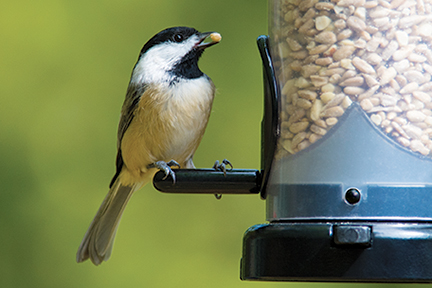Bird of the Month

RED-BREASTED SAPSUCKERS
by Rhonda Ham
Red-breasted Sapsuckers are a member of the woodpecker family that likes to inhabit wet coniferous forests, deciduous forests, coastal areas, mountains, orchards, and parks. They have a red head, throat, and breast area with a white "mustache" on their face. They have a black back, except for northern populations that can have two rows of white or yellowish spots, and they have a light yellow belly. Their wings and rump have white patches and they have a black bill and grey legs.
Various vocalizations are heard from these birds such as chattering, squeals, and scream-like calls. The sound of their bills drumming on surfaces is used to establish territory and to attract a mate. Interestingly, Red-breasted Sapsuckers can interbreed with Red-naped Sapsuckers and Yellow-bellied Sapsuckers in places where their ranges overlap and can produce hybrid offspring that have the morphological features of both species.
Red-breasted Sapsuckers can reach 7.9- 8.7 inches in length and can weigh between 1.4 and 2.4 ounces. They will build nests that are 50 feet, or more, above the ground in deciduous trees. Both sexes will help with the cavity excavation. It's not uncommon for them to use the same tree in later years but they will not use the same cavity, so they create a new one. They usually lay 5- 6 eggs, only have one brood per year, and both parents will help to incubate the eggs. It will be approximately 11-15 days before the babies hatch and another 23- 28 days after hatching before they leave the nest and their parents begin to teach them proper sapsucking habits.
These beautiful birds have a varied diet of plant sap, fruit, seeds, berries, insects and spiders. Red-Breasted Sapsuckers drill a unique pattern of tiny holes, in neatly spaced rows, vertically along the trunk and branches of trees and plants. Some of the most common trees include Willow, Birch, Oak, Mountain Ash, Walnut and fruit trees like Pear, Apple, Peach, and Apricot. Their tongue is covered with stiff hairs which help them to collect the sap from the surface as it begins to ooze from the holes. Rufous hummingbirds and warblers have been known to follow the sapsuckers in order to take advantage of the yummy sap and insects that are released by the drilled holes.
The global population of Red-breasted Sapsuckers is considered large and stable but they do face an uncertain future in the Pacific Northwest and California due to accelerated deforestation.
Fun Fact: A group of sapsuckers is collectively known as a "slurp" of sapsuckers :)

